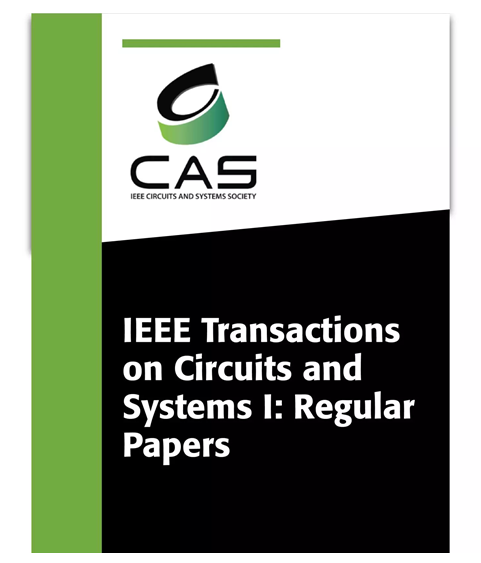Bursting Oscillations Induced by the Variable Discontinuous Boundary in Chua’s Circuit
IF 5.2
1区 工程技术
Q1 ENGINEERING, ELECTRICAL & ELECTRONIC
IEEE Transactions on Circuits and Systems I: Regular Papers
Pub Date : 2025-03-31
DOI:10.1109/TCSI.2025.3553484
引用次数: 0
Abstract
Bursting oscillations and bifurcation mechanisms in piecewise circuit systems have long been a research focus in the fields of dynamics and control. While most previous studies have focused on systems with a fixed discontinuous boundary, this paper examines systems with a variable discontinuous boundary. We develop a mathematical model based on Chua’s circuit and present numerical simulations of bursting oscillations under varying parameters. The impact of the translation of the discontinuous boundary (TDB) on the system’s topological structure and non-smooth bifurcations is analyzed. By combining the two-parameter bifurcation set of equilibrium points with the superposition diagram of the transformed phase diagram (TPD), we reveal mechanisms behind different bursting modes induced by the TDB. A Multisim-based simulation circuit is designed to validate the research results. It is found that the topology of the equilibrium branches of each subsystem remains the same during the TDB, but the number of smooth bifurcations changes due to the switching between subsystems. The TDB also alters the characteristics of the boundary equilibrium point, leading to the catastrophic disappearance or emergence of non-smooth limit cycles, which consequently changes the number of spiking oscillations. Moreover, the interaction of the slow passage effect (SPE) and the TDB causes the trajectory to remain in a delayed segment, affecting the number of spiking oscillations per period. Additionally, the TDB may lead to the disappearance of bursting oscillations, then the system exhibits a behavior similar to that of simple harmonic motion. Our study expands the scope of research on piecewise-smooth circuit systems.蔡氏电路中可变不连续边界引起的爆破振荡
分段电路系统的突发振荡和分岔机制一直是动力学和控制领域的研究热点。以往的研究大多集中在具有固定不连续边界的系统上,而本文研究的是具有可变不连续边界的系统。我们建立了一个基于蔡氏电路的数学模型,并对不同参数下的爆破振荡进行了数值模拟。分析了不连续边界平移对系统拓扑结构和非光滑分岔的影响。通过将平衡点的双参数分岔集与变换相图(TPD)的叠加图相结合,揭示了TDB诱发不同爆破模式的机理。设计了基于multisim的仿真电路对研究结果进行验证。研究发现,在TDB过程中,各子系统平衡分支的拓扑结构保持不变,但由于子系统之间的切换,光滑分支的数量发生了变化。TDB还改变了边界平衡点的特性,导致非光滑极限环的灾难性消失或出现,从而改变了尖峰振荡的数量。此外,慢通道效应(SPE)和TDB的相互作用导致轨迹保持在延迟段,影响每个周期的尖峰振荡次数。此外,TDB可能导致爆破振荡消失,系统表现出类似简谐运动的行为。我们的研究扩展了分段光滑电路系统的研究范围。
本文章由计算机程序翻译,如有差异,请以英文原文为准。
求助全文
约1分钟内获得全文
求助全文
来源期刊
CiteScore
9.80
自引率
11.80%
发文量
441
审稿时长
2 months
期刊介绍:
TCAS I publishes regular papers in the field specified by the theory, analysis, design, and practical implementations of circuits, and the application of circuit techniques to systems and to signal processing. Included is the whole spectrum from basic scientific theory to industrial applications. The field of interest covered includes: - Circuits: Analog, Digital and Mixed Signal Circuits and Systems - Nonlinear Circuits and Systems, Integrated Sensors, MEMS and Systems on Chip, Nanoscale Circuits and Systems, Optoelectronic - Circuits and Systems, Power Electronics and Systems - Software for Analog-and-Logic Circuits and Systems - Control aspects of Circuits and Systems.

 求助内容:
求助内容: 应助结果提醒方式:
应助结果提醒方式:


